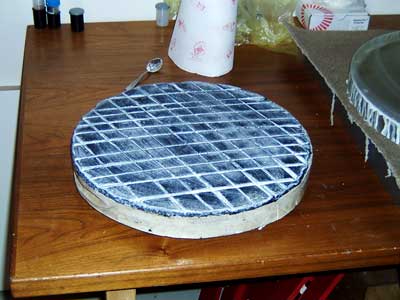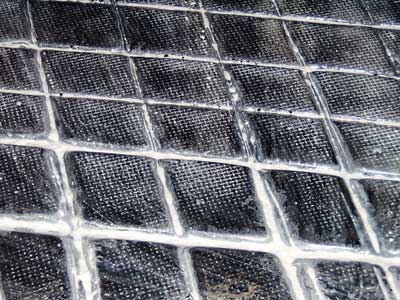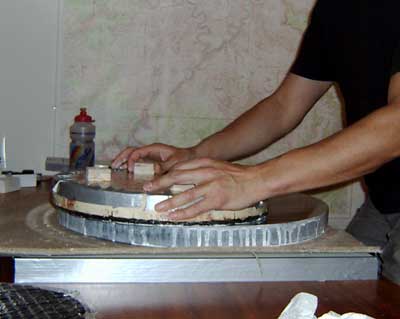Room temperature was around 18 to 20°C, which is actually too cold for 28° pitch. Still, it worked well, the lap had good contact, but the surface of the mirror was not really smooth in the Foucault image.
I used Ceri HPC as polishing agent in a rather thin suspension, roughly 1:8 in water. The ceroxide settles over time in the stock suspension, such that it needs to be stirred up before use. I added water to the mirror surface as soon as the movements of the lap became harder.
When I started to move the pitch lap
for the first time, I immediately noticed that it will be a torture to
keep this 40 cm lap running ![]() !
Therefore I increased the number of grooves and also put a thin mosquito
netting between lap and mirror during pressing for micro facetting. This improved
the movements somewhat, but it still was hard work. I polished between 45
minutes and 1.5 hours in a row. After that, I was always completely
exhausted. The polishing strokes consisted, similar as the grinding
strokes, of circular movements with varying overlap (like a rosetta
pattern). The tool was rotated every once in a while and also the mirror
was rotated on its support.
!
Therefore I increased the number of grooves and also put a thin mosquito
netting between lap and mirror during pressing for micro facetting. This improved
the movements somewhat, but it still was hard work. I polished between 45
minutes and 1.5 hours in a row. After that, I was always completely
exhausted. The polishing strokes consisted, similar as the grinding
strokes, of circular movements with varying overlap (like a rosetta
pattern). The tool was rotated every once in a while and also the mirror
was rotated on its support.
Foucault test was performed with a slitless tester and moving source.
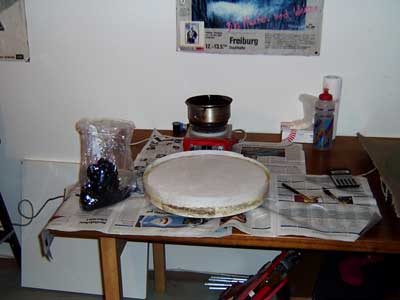
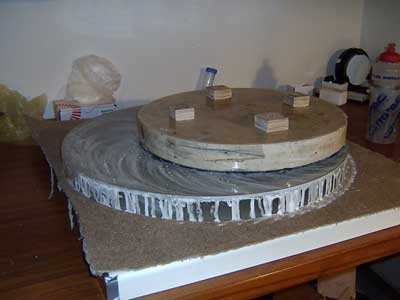
Polishing took about 12 hours of hard work spread over two weeks.
I frequently tested the mirror for astigmatism, which was certainly present after fine grinding, and which was not due to a warped blank. This astigmatism could be detected optically, but not with a spherometer. I think such astigmatism is probably normal, usually goes unnoticed, and disappears during polishing.
Polishing progress was checked regularly by a microscope and by looking for stray light from a laser directed at the surface.
A more detailed diary of the polishing can be found here (German only).
